Shadows is a 1958 American independent drama film directed by John Cassavetes about race relations during the Beat Generation years in New York City. The film stars Ben Carruthers, Lelia Goldoni and Hugh Hurd as three African-American siblings, though only one of them is dark-skinned. The film was initially shot in 1957 and shown in 1958, but a poor reception prompted Cassavetes to rework it in 1959. Promoted as a completely improvisational film, it was intensively rehearsed in 1957, and in 1959 it was fully scripted.
| Shadows | |
|---|---|
| Directed by | John Cassavetes |
| Produced by | Maurice McEndree Nikos Papatakis |
| Written by | John Cassavetes Robert Alan Aurthur |
| Starring | Ben Carruthers Lelia Goldoni Hugh Hurd |
| Music by | Charles Mingus Shafi Hadi |
| Cinematography | Erich Kullmar |
| Edited by | Len Appelson Maurice McEndree Wray Bevins |
| Distributed by | British Lion |
Release date | November 11, 1959 |
Running time | 87 minutes |
| Country | United States |
| Language | English |
The film depicts two weeks in the lives of three siblings on the margins of society: two brothers who are struggling jazz musicians and their light-skinned younger sister who goes through three relationships, one with an older white writer, one with a shallow white lover and finally one with a gentle young black admirer.
Film scholars consider Shadows a milestone of American independent cinema. In 1960, the film won the Critics Award at the Venice Film Festival.
Screenplay
Ben, diffident and awkward, is meant to be a jazz trumpeter but wastes his time drinking in Manhattan bars and trying to pick up girls with two fellow-idlers, Dennis and Tom. He is supported by his brother Hugh, supposed to be a jazz singer but unable to find much work because of his old-fashioned style. They live with their fair-skinned young sister Lelia, who intends to be a writer. At first she is under the wing of an older intellectual David, but at a party abandons him for the younger Tony, who takes her virginity. Seeing her home, he is shocked to find that her family are black and is kicked out by Hugh, who does not want his sister going with white men. Lelia is paired off with a pleasant black man, who is shocked at the independent ways she has acquired. Ben, after getting beaten up for trying to muscle in on some girls in a bar, may have learned a lesson. Hugh, who may at last have made some compromises over his act, gets a booking in Chicago.
- Lelia Goldoni : Lelia
- Hugh Hurd : Hugh
- Ben Carruthers : Ben
- Anthony Ray : Tony
- Dennis Sallas : Dennis
- Tom Allen : Tom
The idea for the film came from a classroom exercise. With acting coach Burt Lane (later the father of Diane Lane), Cassavetes was conducting classes for aspiring actors at the Variety Arts Theatre in Manhattan's off-Broadway Union Square neighborhood, the classes listed as "The Cassavetes-Lane Drama Workshop"; this was Cassavetes' attempt to counter the adherents of method acting who controlled much of New York theatre and film. A particular exercise became the core of the film: a young African-American woman who was very light-skinned dated a young white man, but he was repulsed when he discovered she had a black brother. Cassavetes determined to put the scene on film, so he began looking for funding. While ostensibly promoting the film Edge of the City on Jean Shepherd's Night People radio show on WOR in February 1957, Cassavetes said he could make a better film than director Martin Ritt. He pitched the drama workshop idea to Shepherd's radio audience. Cassavetes was surprised when listeners sent about $2,000 to start the project. Money also came from Cassavetes' friends including Hedda Hopper, William Wyler, Joshua Logan, Robert Rossen, José Quintero, and Cassavetes' agent Charlie Feldman. Cassavetes hired German cinematographer Erich Kullmar as cameraman, the only crew member besides Cassavetes with any experience in film.
Using the student actors from the Cassavetes-Lane Drama Workshop, shooting started in February 1957 in a largely improvised form. Cassavetes composed an outline for the film, but not a script. Cassavetes and assistant director/producer Maurice McEndree gave detailed instructions to the actors, constraining the situation to guide the story, with the words and the movements improvised by the actors. Cassavetes intended the story to evolve from the characters rather than vice versa. Three initial weeks of work was thrown out, the first week because of technical problems with quality, and the next two weeks because Cassavetes felt that the actors were talking too much. After they had developed their characters to the point that they could portray emotion in silence, the actors improvised with more clarity and with a level of truth that Cassavetes found revealing. He was a demanding director who required a critical romantic scene to be performed more than 50 times before he was satisfied with the results. About 30 hours of film was exposed during several months of off-and-on shooting.
Filming took place in various locations, including inside the apartment Cassavetes shared with his wife Gena Rowlands, and on the streets of New York. Using a 16 mm camera borrowed from Shirley Clarke, and monochrome film stock, Kullmar was forced to shoot scenes in which the actors could move in any direction they wished, making for unpredictable zoom and focus requirements. No filming permits were obtained, so the cast and crew were necessarily ready to pack quickly and leave a location. The lighting was a general wash rather than specific effects. The microphone was placed by Jay Crecco (who was also an actor in the film), and dialogue was recorded to tape with street noises intruding. Even though Cassavetes said "print it!" after he was satisfied with a scene, there was nobody on the crew keeping track of the film takes, so all of the exposed film had to be printed. The editing of the film was made much more difficult by the lack of notes taken during shooting, and by the sound recorded "wild" on tape, not synchronized with the film. The microphone failed to pick up some of the dialogue, requiring lip-readers to watch the footage and write down what had been said, so that the actors could re-record their dialogue. Editors Len Appelson, Maurice McEndree and Wray Bevins began work while shooting was still underway, editing the film in an office next door to the Variety Arts Theatre, the office which is seen hosting a rock 'n roll party in the film. Primary photography was finished by mid-May 1957, with 60,000 ft (18,000 m) of film exposed, but the editing took more than a year. Cassavetes was not available during much of this time; starting in June he was on location working as an actor first in Saddle the Wind, then he was acting in Virgin Island (both 1958). At the end of 1957, the editors moved to a professional editing suite to complete the task.
Cassavetes intended to have the jazz music of Charles Mingus on the soundtrack, but Mingus came up with a number of songs that could stand on their own rather than impressionistic film music to follow the story. Three hours of Mingus and his band were recorded, and much of this material was placed in the first version of Shadows which was screened in 1958, but almost all of it was removed during the 1959 reworking of the film.
The film was finished late in 1958, printed onto 16 mm stock, and three free screenings were announced by Shepherd on his radio show. Cassavetes overestimated the audience; only about 100 people showed up for each of the midnight showings at Manhattan's Paris Theater which could hold almost 600 people. At the first showing, there were initial problems with the sound, which were remedied. Some of the audience members were friends and colleagues of Cassavetes; he later said that 90% of them disliked the film. A number of people walked out before the film ended, including Burt Lane who had coached most of the cast. Assistant cameraman Al Ruban told Cassavetes that the film was "okay in a kind of naive way". Cassavetes' father told him it was a "pure" film, not a good film. Cassavetes himself thought it was "totally intellectual" and thus "less than human." The poor reception made him decide that the film should be radically reworked.
There was, however, one strong admirer. Avant-garde film critic Jonas Mekas highly praised the film, writing in the January 1959 issue of Film Culture that Shadows "presents contemporary reality in a fresh and unconventional manner... The improvisation, spontaneity, and free inspiration that are almost entirely lost in most films from an excess of professionalism are fully used in this film." The magazine, founded by Mekas and his brother, bestowed upon Shadows its first "Independent Film Award". Mekas then arranged to have the film shown six more times at the Young Men's Hebrew Association.
Cassavetes shot new scenes in 1959 using a script he co-wrote with Robert Alan Aurthur. The racial prejudice angle was reduced, and the three main characters were given more complexity, as well as more time exploring their connectedness. With financing from Nikos Papatakis and others, Cassavetes re-assembled the required members of the cast and crew. Half to two-thirds of the original footage was replaced, which angered those whose work was diminished. A 16 mm print was struck, and the new version was shown on November 11, 1959, at Amos Vogel's avant-garde Cinema 16, on a double bill with the 30-minute Beat poetry film Pull My Daisy.
The first version was an ensemble performance while the second version put more emphasis on Lelia. The revelation that she was African American came much earlier in the second version. The first version had more of a conventional narrative but its pace was slow in sections. The first version contained a number of technical flaws such as lip-sync error. Lelia's date with Tony was greatly altered: In the first version, she only talks with him, but in the second version, she loses her virginity to him. The first version had more scenes of Ben and his friends hanging around Times Square. Actor Anthony Ray, the son of famous director Nicholas Ray, had top billing in the first version, playing the part of Lelia's date Tony, but in the second version, this billing was reduced to reflect his diminished screen time. His character was given greater dignity in the second version.
A major difference between the two was that Mingus's music was featured more on the first version, but the music was incongruously paired with the visual, according to film critic Jonathan Rosenbaum. For the second version, Cassavetes replaced almost all of the Mingus recordings. As an example, he removed a section in which a muted trumpet replaces the speech of character Tony on the phone, the sound mocking him. Another removed part was the Mingus band shouting out a snatch of the gospel song "Leaning on the Everlasting Arms" during a scene where Ben and his friends are recovering from a brutal fight. The first version also uses two Frank Sinatra songs that are not in the second version because Cassavetes could not obtain the rights. Mingus's saxophonist Shafi Hadi, previously known as Curtis Porter, provided most of the second version's soundtrack, expanding on a short passage that Mingus had written. Hadi was directed in his improvisation by Cassavetes who acted out all the parts for him in the recording studio.
Another difference between the versions is that Ben's statement "I've learned a lesson" comes at the end of the second version, conveying to the viewer that Ben will improve himself after receiving such a cruel beating. This brings a sense of moral closure to the film. In the first version, however, the fight and Ben's statement appear halfway through the film, following which he is shown doing the same things again, having failed to learn his lesson. Thus, Ben is portrayed as unlikely ever to change his ways in the first version.
In his December 1959 manifesto "A Call for a New Generation of Film Makers", Mekas said that Shadows was the start of a new movement which would inspire independent filmmakers, energize the flagging avant-garde film scene, and triumph over the commercial Hollywood film industry. Even so, he was upset that the film had been reworked. In January 1960 he wrote in his movie review column in The Village Voice that the 1959 version was commercialized, "just another Hollywood film", and that everything he had praised in the first version had been "completely destroyed." Later in his life, he said that the first version never should have been remade, but that the second version was a better indication of the direction that Cassavetes was going as a filmmaker.
Shadows was given the Critics Award at the Venice Film Festival. Cassavetes obtained distribution through British Lion in 1961.
The film was shocking to American audiences in the late 1950s and early 1960s because it turned the "concept of race upside down". Two of the actors were far from being considered African Americ
Watch movie Shadows 1959 Film online on Amazon
Watch movie Shadows 1959 Film online
Watch The Movie On PrimeDarling Full HD Movie Download
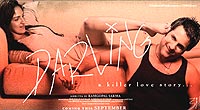
Go Full HD Movie Download

Sohni Mahiwal (1984) Full HD Movie Download
.jpg)
Saat Bijliyan Full HD Movie Download
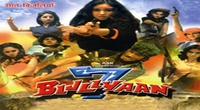
Kisna Full HD Movie Download
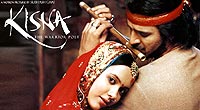
Lorie Full HD Movie Download
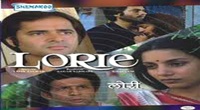
Dancer Full HD Movie Download

Veerta Full HD Movie Download
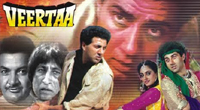
Nishan Full HD Movie Download
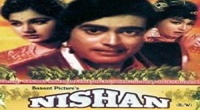
Rock Climber Full HD Movie Download
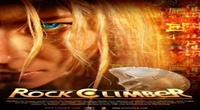
Aji Bas Shukriya Full HD Movie Download
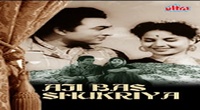
Mentor Full HD Movie Download

Prayatnam Full HD Movie Download
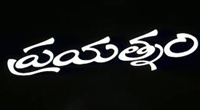
Harry Potter and the Order of the Phoenix Full HD Movie Download

Crime File Full HD Movie Download
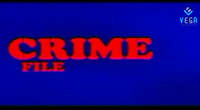
Khaidi Kalidasu Full HD Movie Download
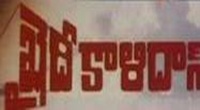
Chenna Kesava Reddy Full HD Movie Download
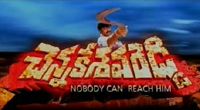
Rustum Full HD Movie Download
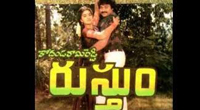
Konte Kodallu Full HD Movie Download
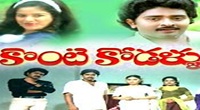
Nandha Full HD Movie Download
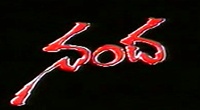
Pyaar Impossible Full HD Movie Download

Download latest Movie from bollywood
- 1> baaghi 3
- 2> THE SKY IS PINK MOVIE FULL STORY AND REVIEW
- 3> Luka Chuppi
- 4> TO ALL THE BOYS I’VE LOVED BEFORE
- 5> Kabir Singh
- 6> Street Dancer 3D
- 7> Simmba
- 8> Gone Girl
- 9> The Girl Who Lived
- 10> Ludo
- 11> DILWALE DULHANIA LE JAYENGE
- 12> GUILTY
- 13> The Godfather
- 14> Adventures of Rusty
- 15> Sooryavanshi
- 16> Satyameva Jayate 2
- 17> Thappad
- 18> Bhool Bhulaiyaa 2
- 19> KGFChapter 2
- 20> Mardaani 2
- 21> Pinjar
- 22> Shivaji maharaj
- 23> Ek Villian 2
- 24> Hungama 2
- 25> Divergent
- 26> Mumbai Saga
- 27> The Internship
- 28> HIT (telugu)
- 29> Panga
- 30> The perfect date
- 31> 16 December
- 32> Gopala Gopala (Telugu)
- 33> Brahmastra
- 34> Gangubai Kathiawadi
- 35> Manmadhudu
- 36> Nenu local
- 37> Mahanati
- 38> Shatamanam bavathi
- 39> Lagaan
- 40> After
- 41> MOM
- 42> Shamshera
- 43> Raguvaran BTech
- 44> Khakee
- 45> The villain
- 46> OM
- 47> Mr. perfect
- 48> Bueatifull mind
- 49> Hichki
- 50> Gabbar Singh
- 51> Jogi
- 52> Before Sunrise
- 53> Before Sunset
- 54> Before Midnight
- 55> The Big Bull
- 56> Top Gun: Maverick
- 57> The Purge
- 58> The Sky is Pink
- 59> Laxmmi Bomb
- 60> Sadak 2
- 61> Sufna
- 62> Prithviraj
- 63> PK
- 64> Coolie No 1(2020)
- 65> Black Widow
- 66> Dear Zindagi
- 67> Dil Bechara
- 68> PHIR HERA PHERI
- 69> WAR
- 70> Dostana
- 71> RRR: Roudram Ranam Rudhiram
- 72> Maidan
- 73> Dabbang 3
- 74> Chhalaang
- 75> life as we know it
- 76> SherShaah
- 77> Sandeep Aur Pinky Faraar
- 78> Event Horizon
- 79> 83
- 80> Radhe: Your Most Wanted Bhai
- 81> Gunjan Saxena: The Kargil Girl
- 82> Mr India
- 83> Vivah
- 84> Anokha Bandhan
- 85> Ghost
- 86> Bhoot: Part One - The Haunted Ship
- 87> Haseen Dilruba
- 88> Laal Singh Chaddha
- 89> Qismat
- 90> Rajput
- 91> Drive
- 92> Dil Chahta Hai
- 93> Dil Ki Baazi
- 94> Dil Ka Rishta
- 95> Teesri Manzil
- 96> Dil
- 97> Love Aaj Kal
- 98> Khaali Peeli
- 99> Bunty Aur Babli 2
- 100> Atrangi Re
- 101> Gulabo Sitabo
- 102> Jodi
- 103> Suraj Pe Mangal Bhari
- 104> Deewana
- 105> Attack
- 106> Sardar Udham Singh
- 107> Toofan
- 108> THE LOVEBIRDS
- 109> Jersey
- 110> Ginny Weds Sunny
- 111> Thalaivi
- 112> Shiddat
- 113> Angels vs Zombies
- 114> Koi Mil Gya
- 115> Thank God
- 116> Bhuj: The Pride of India
- 117> Hum Aapke Hain Kaun
- 118> The Platform
- 119> Bird Box
- 120> Roohi Afzana
- 121> Torbaaz
- 122> Nikamma
- 123> World War Z
- 124> Extraction
- 125> Train to Busan
- 126> Life of Pi
- 127> SHAADI MEIN JROOR AANA
- 128> Himmat Aur Mehnat
- 129> To All The Boys: P.S. I Still Love You
- 130> Mimi
- 131> Good Newwz
- 132> Shubh Mangal Zyada Saavdhan
- 133> Raabta
- 134> Harry Potter and the Philosopher's Stone
- 135> Harry Potter and the Chamber of Secrets
- 136> Chhapaak
- 137> War of the Worlds
- 138> Harry Potter and the Prisoner of Azkaban
- 139> Harry Potter and the Goblet of Fire
- 140> MURDER MYSTERY
- 141> Shakuntala Devi
- 142> Bachchan Pandey
- 143> Jayeshbhai Jordar
- 144> Sheer Qorma
- 145> Saina
- 146> 'O' Pushpa I hate tears
- 147> Kedarnath
- 148> MS Dhoni The Untold Story
- 149> Chhichhore
- 150> Badhaai Ho
- 151> Unstoppable
- 152> Oz the Great And Powerful
- 153> The Girl on the Train
- 154> Haathi Mere Saathi 2020
- 155> The Conjuring: The Devil Made Me Do It
- 156> Gandhi Se Pehle Gandhi
- 157> The Song of Scorpions
- 158> Srimanthudu
- 159> Hello Guru Prema Kosame
- 160> Beauty and The Beast
- 161> Black Panther
- 162> Charlie and the Chocolate Factory
- 163> Bole Chudiyan
- 164> Fidaa
- 165> Duvvada Jagannadham
- 166> Bruce Lee: The Fighter
- 167> Hyper
- 168> Yaara
- 169> Red (2020)
- 170> Shivam
- 171> That Is Mahalakshmi
- 172> Nishabdham
- 173> Aashram 2020 web series
- 174> Laxmii
- 175> Mismatched
- 176> STUDENT OF THE YEAR 2
- 177> NAIL POLISH
- 178> Ramprasad Ki Tehrvi
- 179> KAAGAZ
- 180> 12 o Clock
- 181> The Power
- 182> bolo hau
- 183> Tribhanga
- 184> JAMUN
- 185> Madam Chief Minister
- 186> Maasaab
- 187> Aadhaar
- 188> Tanhaji
- 189> Bhaagi 3
- 190> Bhootnath
- 191> MALANG
- 192> Jai Mummy Di
- 193> Haathi Mere Saathi 2021
- 194> Shakeela
- 195> Unpaused
- 196> Annayya
- 197> Vamsoddharakudu
- 198> Mrugaraju
- 199> Narasimha Naidu
- 200> Sankranti
- 201> Manasu Maata Vinadhu
- 202> Anjaane
- 203> Apaharan
- 204> Bachke Rehna Re Baba
- 205> Bewafaa
- 206> Roohi
- 207> Radhe
- 208> Zindagi Khoobsoorat Hai
- 209> Yeh Mohabbat Hai
- 210> Yeh Kya Ho Raha Hai?
- 211> The Tomorrow War
- 212> DehradunDiary
- 213> Meri Shaadi Karaoo
- 214> Matruu Ki Bijlee Ka Mandola
- 215> No One Killed Jesica
- 216> Aag Ka Goola
- 217> Eight Million Dollars
- 218> Three Hundred
- 219> Cats and Dog
- 220> Decoy
- 221> Gold Rush
- 222> You Have Got Mail
- 223> Final Destination three
- 224> Tofan
- 225> Jungle
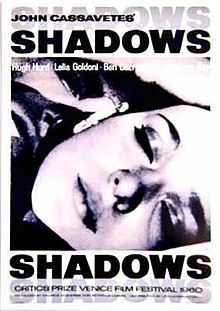 Story of movie Shadows 1959 Film :
Story of movie Shadows 1959 Film : 